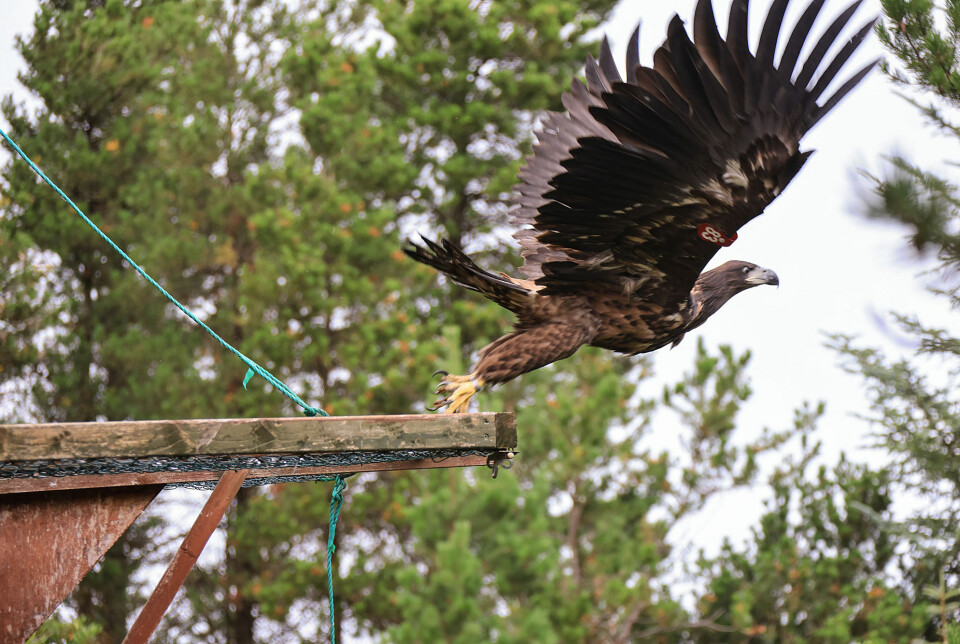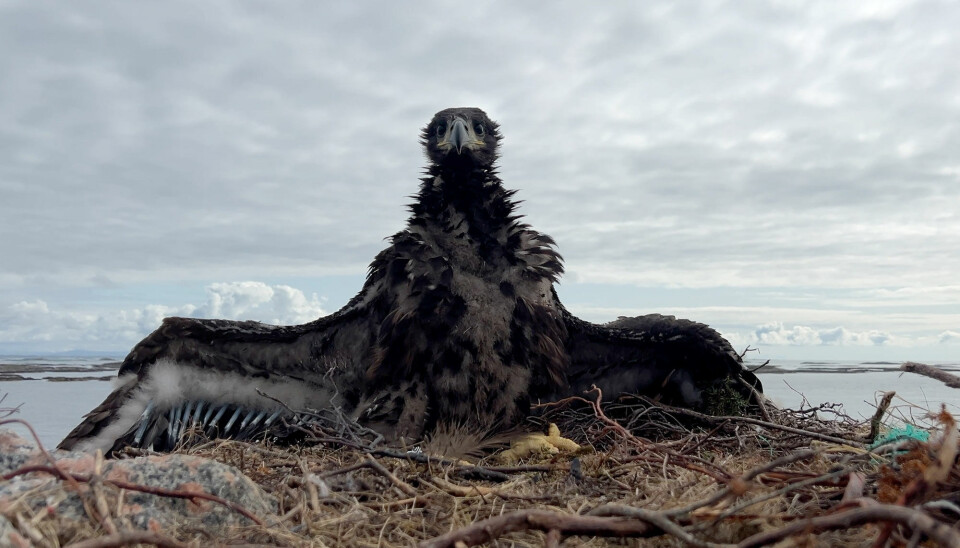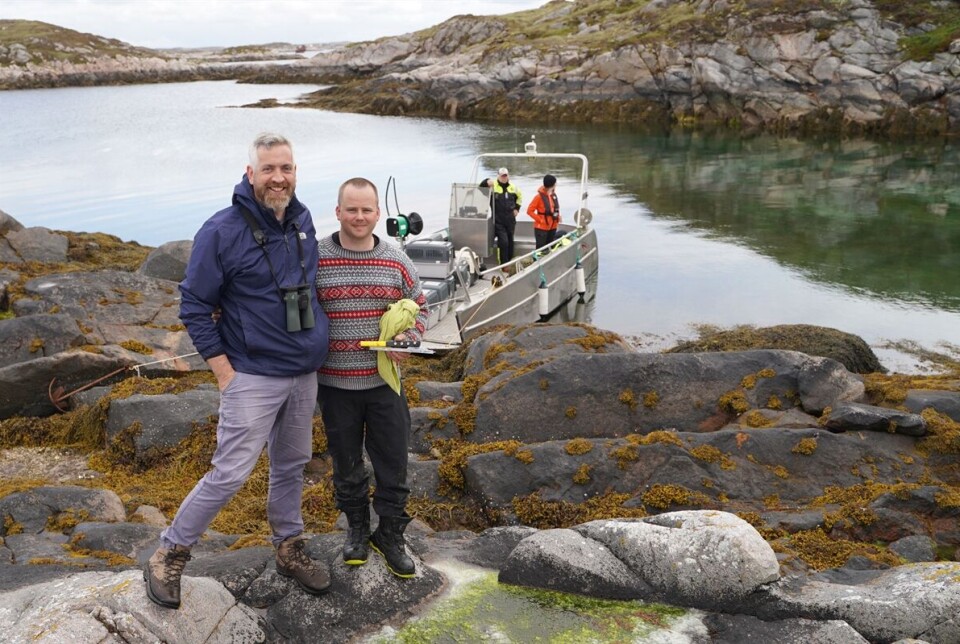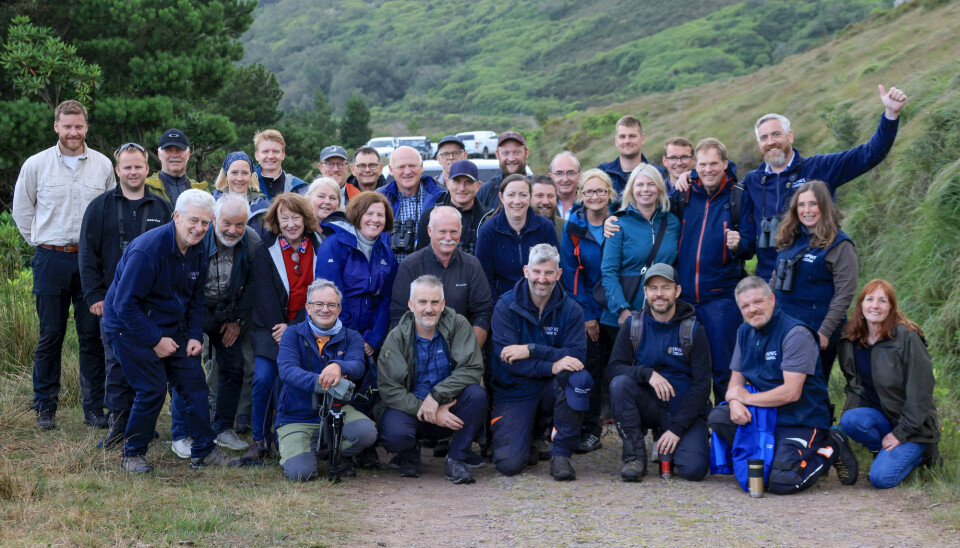THIS CONTENT IS BROUGHT TO YOU BY NINA - Norwegian Institute for Nature Research - read more
White-tailed sea eagles are breeding in Ireland again after more than a century
Four Norwegian white-tailed eagles were recently released in Ireland. It marked the end of the reintroduction programme that has brought this majestic bird back to the island.

The release marked the end of the White-Tailed Eagle Reintroduction Programme, and nearly two decades of efforts to reestablish and strengthen Ireland’s eagle population.
Both Norwegian and Irish partners were present to celebrate the success.
White-tailed sea eagles were once native to Ireland, but hunting, poisoned bait, and habitat loss drove the species to extinction. When the project started in 2007, the eagles had been absent for more than a century.
Since then, 245 Norwegian eagles have been sent to Ireland, and the population is now large enough to survive on its own.
Collaboration has been essential
"This programme has seen this mighty bird soar again in Irish skies. Over 18 years' work and collaboration has led to a growing white-tailed eagle population, and we now have evidence of white-tailed eagles breeding in counties further afield – from the south of the island in Cork right up to Donegal," says Christopher O'Sullivan, the Irish Minister of State for Nature, Heritage and Biodiversity.
It is the cooperation between the National Parks & Wildlife Service of Ireland and the Norwegian Institute for Nature Research (NINA) that has led to this success.

White-tailed eagles were previously threatened in Norway as well. However, since their protection in 1968, the population has grown significantly, and Norway now hosts the largest breeding population in Europe.
The Norwegian Environment Agency has therefore granted permission to collect Norwegian birds to establish and strengthen the Irish population.
During August, the final 26 chicks will be released into the wild around Ireland.
Chicks from Trøndelag
An avid birdwatcher himself, O’Sullivan participated in collecting these young chicks in Norway earlier this year with researchers from NINA and local eagle experts.

White-tailed eagles usually nest in trees or on cliffs. But out on the exposed coastline, they may also nest on the ground.
To ensure that at least one chick remains in the nest with the parents, the birds are selected from nests with two or three chicks.
As most eagle pairs raise only one chick, local volunteers spend much time and effort on locating such nests each year.
First flight
Upon arrival, the young eagles are housed in purpose-built aviaries, where they can build strength and practice flying before being released. To minimise human contact, they are fed through a hatch in the back wall.
Over the following weeks, the eagles develop their flight feathers, and the strength needed for flight.
On the day of the release, the cage is opened, and the eagles take flight into their new surroundings. Food is provided nearby to mimic the behaviour of adult birds, which leave food near the nest after chicks have fledged until the young birds have learned to forage for themselves.

“Everything points to the fact that we’ve made it! This is one of the highlights of my career," says Duncan Halley, senior research scientist at NINA and coordinator of the Norwegian contribution to the white-tailed eagle project.
He attributes the success to strong cooperation and local commitment, resulting in a stable, growing population.
"The project has worked on every level, from introduction to the first Irish breeding and now having a stable population," says Halley.

This content is paid for and presented by NINA - Norwegian Institute for Nature Research
This content is created by NINA's communication staff, who use this platform to communicate science and share results from research with the public. NINA is one of more than 80 owners of ScienceNorway.no. Read more here.
More content from NINA:
-
How will climate change affect lakes worldwide?
-
Could a tunnel help wild reindeer in Norway?
-
Norwegian white-tailed sea eagles are helping to rebuild a lost population in Ireland
-
1 in 4 freshwater species are at risk of extinction: "It's not too late to take action"
-
Insects prefer cold winters with lots of snow
-
Weather radars reveal where birds migrate




































